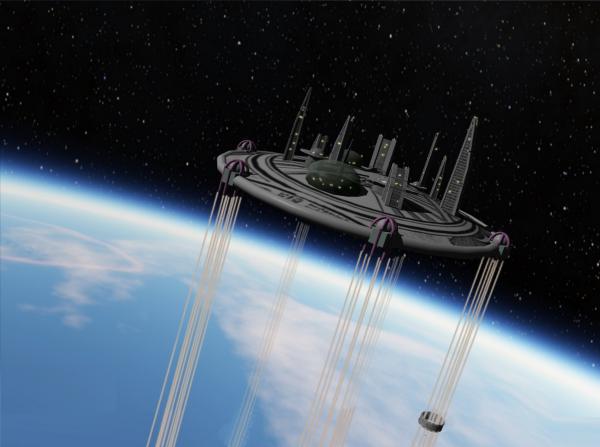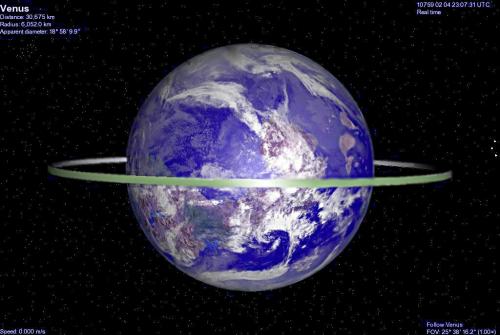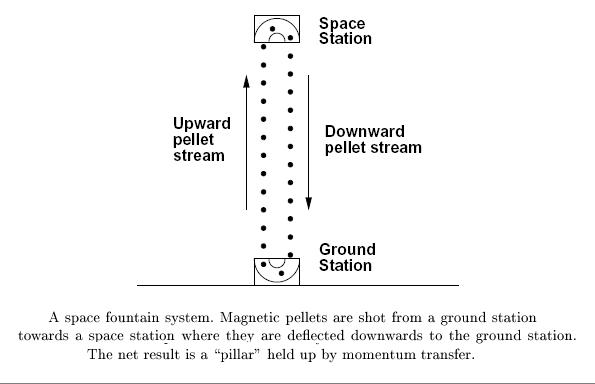BY LETTER
Space Cities
Technology > Application > Infrastructure
Technology > Application > Megascale Engineering
Technology > Application > Transportation > Surface-To-Orbit Transport
Technology > Application > Megascale Engineering
Technology > Application > Transportation > Surface-To-Orbit Transport
Habitats in stationary locations above a planet | |
 Image from Steve Bowers | |
| New Phoenix City, suspended on eighteen space fountains above Florizel | |
The term 'space city' has traditionally been reserved for habitats suspended above a particular location on a planet. One of the first habitats to identify itself as a space city was Supra-Tokyo, located in geostationary orbit above the Pacific ocean on Old Earth. Many habitats in Clarke Rings take the name of cities or other locations on the planet beneath them.
However stationary orbits are located at a relatively large distance from the planet below. Even if a beanstalk is present, the journey time between the planet and such habitats can be significant. However mass-beam technology can be used to establish structures and habitats much closer to the planet's surface.
City Rings
 Image from Steve Bowers | |
| Venus after Terraforming; the cityring, built using atmospheric carbon, can be seen | |
 Image from Anders Sandberg |
One downside to stationary habitats of this kind is that they move far below orbital speed, so any spacecraft leaving them will need to accelerate rapidly in order to travel into space. City rings and other orbital ring systems can support lengthy acceleration tracks, allowing relatively easy access to orbit; but space fountains and cities supported by them are generally too small to allow this sort of acceleration. Sometimes a static orbital ring may be used to allow easy access to space from such structures.
Related Articles
Appears in Topics
Development Notes
Text by Steve Bowers
Mike Miller and Alex Mulvey
Initially published on 23 March 2015.
Mike Miller and Alex Mulvey
Initially published on 23 March 2015.






